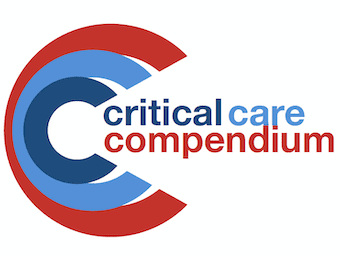
Neuromuscular Blockade in ARDS
The use of neuromuscular blockade in acute respiratory distress syndrome (ARDS) is controversial. Renewed interest since the French ACURASYS trial in 2010

The use of neuromuscular blockade in acute respiratory distress syndrome (ARDS) is controversial. Renewed interest since the French ACURASYS trial in 2010

Reviewed and revised 19 May 2014 OVERVIEW Prone positioning can be used in mechanically ventilated patients with severe hypoxic respiratory failure to optimise oxygenation Refer to Prone Positioning for Hypoxic Respiratory Failure on INTENSIVE for the Alfred ICU guideline, cognitive…

Mechanical ventilation with application of pressure to the lung, whether positive or negative, can cause damage known as ventilator-associated lung injury (VALI)

Recruitment manoeuvres are transient increases in transpulmonary pressure designed to open up collapsed airless alveoli. Primarily used in severe acute respiratory distress syndrome (ARDS)

bronchial blocker is a device that can isolate part of the bronchial tree at the lobar level

Setting Up a Ventilator

Pressure vs Volume Loop: graphical representation of relationship between pressure and volume during inspiration and expiration. Spontaneous breaths go clockwise and positive pressure go counter clockwise

Dynamic Pressure-Volume Loops: used to estimate work of breathing in terms of expiratory and inspiratory components.

OVERVIEWPatient-Ventilator Dyssynchrony occurs when the patient’s demands are not met by the ventilator, resulting from problems with: VENTILATION STRATEGIES Total Ventilator-controlled Mechanical Support: Partial Patient-Controlled Mechanical Support: CAUSES Patient factors Ventilator factors TYPES OF VENTILATOR DYSSYNCHRONY Ineffective triggering Inappropriate triggering…

Adaptive support ventilation (ASV) is a positive pressure mode of mechanical ventilation that is closed-loop controlled, and automatically adjusts based on the patient's requirements

Cervical artery dissections is the collective term for dissections of the carotid or vertebral arteries. They are important causes of stroke in younger people and are often difficult diagnoses to make

Practice misalignment occurs in RCTs when randomization disrupts the normal relationship between clinically important characteristics and therapy titration. This can create subgroups of patients within each study arm that receive levels of therapy that are inconsistent with current practices outside of the clinical study and may be harmful